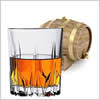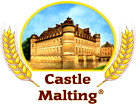Your cart
 UK: UK distilleries embrace rye as consumers seek new profiles
UK: UK distilleries embrace rye as consumers seek new profiles
Some UK distilleries are starting to embrace rye as their consumers seek new profiles, Drinks International reported on June 12.
While whisky can be shaped by a variety of factors during its creation, from the techniques used to the barrels it’s aged in, some Scotch producers are taking things back to the beginning and concentrating on the grain it starts from.
In Islay, Bruichladdich has, for a long time, focused on barley for the production of its whiskies, typically using organic barley from Aberdeenshire and bere barley from the University of Highlands and Islands in Orkney. But recently the distillery has started dabbling with rye. Before getting into the rye itself and how that came about, it’s helpful to understand the role of barley at Bruichladdich.
Prior to its foray into rye, the distillery began growing its own barley on the island, which isn’t typically done due to the harsh climate and flocks of seagulls that enjoy eating the grain, hence the imports from mainland Scotland. However, depending on production level, the distillery has been able to incorporate about 50% of Islay barley across its whole range.
Head distiller Adam Hannett tells Drinks International on a visit to the brand’s home that when it started growing Islay barley: “It was really hard to convince people to do it. It’s a difficult crop and the expense meant no one was really interested. With Bruichladdich we wanted to get back to that traceability. We’ve been working to restore that connection, championing flavour and bringing back provenance.”
The distillery deliberately uses old machinery to keep a sense of heritage and place, as Hannett adds: “Islay barley will get less yield, whereas the mainland gets more for the same varieties, but we gain in terms of flavour. Islay barley gives a bit more depth of flavour.
“We don’t necessarily chase yield and we accept that we’re not going to get as much alcohol from barley grown on Islay, but we have to pay more for it. It’s bigger than that, it's the connection to the place – both make great whisky but it’s that connection and knowing the money goes back into local farming.”
Hannett notes the use of barley also allows for further experimentation due to that depth of flavour. “With Bruichladdich we’ve really focused on terroir because without the influence of peat, you can really zero in on the influence of barley. There’s huge room for bigger exploration in that.” And as mentioned, one aspect of that exploration is rye.
The idea to create an Islay-based rye came from the Islay barley. Hannett says: “Rye is a great break crop to give the field a rest from barley. Every year we’ve grown barley in a field that had rye in previously, it’s been the best crop of barley on the farm. It’s needed less fertiliser because rye brings those nutrients, and it prevents them from becoming waterlogged too because it’s a winter crop.”
The rye release, named The Regeneration Project, was a result of a conversation with Bruichladdich’s distillery production director and long-standing farming partner Andrew Jones, who grew the rye in 2017 – a first for the farmer, the distillery and the Hebridean island. “It’s the first Islay grown rye,” says Hannett. “It takes time to see those impacts on the farm, but we’re seeing it.”
Over on mainland Scotland in Fife, InchDairnie distillery has taken a different approach to rye. The distillery started distilling in 2015, purpose-built its site to include grains such as rye, and has been producing rye whisky since 2017, looking at around 400 casks a year specifically for the rye.
Ian Palmer, founder of InchDairnie Distillery, says: “The decision to do a rye was really to demonstrate the core fundamentals of the InchDairnie Distillery. That is, we’re all about flavour. We’ve got no heritage to fall back on, we can’t give you a back story that talks about things other than the contents of the bottle. When we designed the distillery, we built in the flexibility to produce different flavours of whiskies from the one distillery, which is not very common at all.
“It’s a Scottish rye that meets the definition of rye whisky in America and we’ve adhered to that definition so we could confidently say it’s a rye whisky. We also felt people were looking for different flavours in their whiskies and exploring different areas of the whisky world. We didn’t want to make another American rye, we wanted to make a rye that spoke to Scotland. It’s got a lot of flavours of Scottish whisky so that’s why it’s made from quite a high proportion of Scottish barley at 47% with 53% of malted rye. For us it was all about exploring the potential to create a number of different flavours from the one distillery and to build the portfolio of whiskeys from just the one malt distillery,” Palmer continues.
On the decision to make rye from the beginning, Palmer adds the grain is an “extremely viscous material and I think so far, the most difficult cereal to work with in a distillery”. He continues: “We make our rye in a very Scottish way. After we’ve milled it, we don’t roller mill, we hammer mill into a much finer grist, then put it into a mash conversion vessel where all of the conversion is carried out from starch into sugar in one dedicated vessel. Then the key point – and a main differentiator between us and other malt distilleries – is that we have a mash filter not a mash tun. This is where we mechanically separate the clear liquor from the solids and that would be extremely difficult to do using traditional methods.” For the distillery’s branded whiskies, all the cereal is grown in Fife.
Despite the success of rye in Scotland, and people looking to different styles, there remain concerns from producers around the labelling of Scottish rye whisky. For context, according to the Scotch Whisky Regulations 2009, the compulsory category descriptions state whisky must be labelled under a specific category. These are: Single Malt Scotch Whisky, Blended Malt Scotch Whisky (a blend of malt whiskies), Single Grain Scotch Whisky, Blended Grain Scotch Whisky (a blend of grain whiskies) or Blended Scotch Whisky (a blend of malt and grain whiskies). Scotch Grain Whisky must be produced from malted barley with other cereals such as wheat and rye, and can be labelled to describe the other cereals used in the mash.
When it comes to the labelling of Scotch rye in particular, Palmer notes it’s something InchDairnie has been campaigning for within the industry for three years, with no results as yet. “There may be a small move but we find it extremely frustrating because, in my opinion, it is anti-competitive and it misleads the consumer.
“In terms of being anti-competitive, only Scottish rye whisky has got to be labelled grain whisky. Rye whisky produced in England can be called rye whisky, and all over Europe, the US, Canada etc. At the moment, all of these other distilleries are allowed to call their rye whisky ‘rye whisky’, but here in Scotland we can’t. I think that’s anti-competitive and we are at a serious competitive disadvantage to these other distilleries,” Palmer continues.
In England, Fielden produces rye whisky, which it can label as such. Chico Rosa, whisky maker at the distillery, notes: “The Scotch whisky industry has a long history with beautiful traditions and a huge global presence. The word ‘single’ is the one that can be confusing here, as it refers to a single distillery and not to a single grain type. A Scotch whisky produced from rye, wheat and malted barley is called ‘single grain’, which can be confusing to a consumer.
“Outside Scotland, nomenclatures are different. See US or Canada for rye whisky definitions as an example. In England, the whisky industry is fresh, with no strong tradition, opening the case for raw definitions to the different whiskies produced. A rye whisky should be composed of a majority percentage of this grain,” Rosa adds.
While in England the labelling is more straightforward, Palmer says that in Scotland: “People are being turned off the idea of moving into rye whisky, simply because of this very anti-competitive position that we are in, and I can’t imagine this being the case with any other product in the UK where you can’t call it what it is. It’s just madness. I can understand the GI situation where certain food, for example, can only be called Cheddar and Wensleydale etc, but you can still call it cheese, but at the moment we can’t call ours cheese, so it is a difficult position and we’re having to work a lot harder at communicating what our product actually is, when in fact everyone else simply puts it on the front of the label.”
According to a Scotch Whisky Association (SWA) spokesperson: “In the UK there is no legislative definition of ‘rye whisky’, although some tend to use the term to describe whiskies consistent with the US definition of a rye whiskey, which requires 51% rye in the mash.”
“However, a Scotch whisky produced in a column still or a pot still from a mash of malted barley and rye is, under UK law, a Scotch Grain Whisky and must be labelled as such. There is, of course, flexibility within the legal framework to use additional descriptions about the whisky, including the cereals used. The SWA continues to work with our members to ensure they clearly and consistently label products with a predominant rye mashbill in a growing and competitive marketplace.
“The SWA will continue to seek recognition for all types of Scotch whisky – from grain to malt, blended to blended malt – around the world through a number of methods, including Geographical Indication status, trademark certification and other laws in markets around the world,” the spokesperson adds.
When it comes to Scotch rye, it will take more distilleries producing rye whisky to see real change. Palmer says: “There’s not many of us at it. It is really a new product in the market and that has got its own issues. I think things do need to change and I think we need to make it easier for new products to come into the market – at the moment that is not the case”.
Zurück






